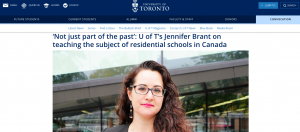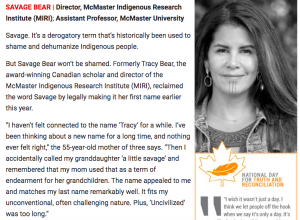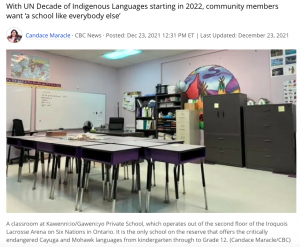Ientsitewate’nikonhraié:ra’te Tsi Nonkwá:ti Ne
Á:se Tahatikonhsontóntie
We Will Turn Our Minds There Once Again,
To the Faces Yet To Come
Second Language Speakers and Language Revitalization in Kahnawà:ke
By
Kahtehrón:ni Iris Stacey
This Masters degree paper is about language revitalization and Indigenous research and Indigenous ways of knowing. I found it interesting that the author starts by ‘positioning’ herself and sharing a bit about her own family and story. I’ve found that several of the Indigenous authors I’ve read in this course (both in the course readings and my own research) have included this type of description of the author’s own position within their community.
This would be a great read for anyone focussing on language for their final project.






